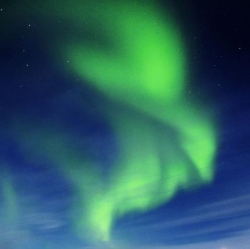
A NASA spacecraft orbiting the Red Planet has detected a mysterious aurora that reaches deep into the Martian atmosphere. The Maven mission observed these "Christmas lights" for five days leading up to 25 December last year. Scientists have also discovered a dust cloud at high altitude, which does not match predictions.
The preliminary results were presented at the 46th Lunar and Planetary Science Conference (LPSC) in Texas. The mission was designed to help solve the mystery of how the Red Planet lost most of its atmosphere and much of its water and other volatiles.
"The question is how much water has been lost into the crust, how much has been lost to space. How much CO2 has been lost to the crust, how much to space," said Maven’s chief scientist Prof Bruce Jakosky from the University of Colorado in Boulder. The bright ultraviolet auroral glow seen by Maven in December spanned Mars’ northern hemisphere.
Auroras, known on Earth as northern or southern lights, are caused by energetic particles such as electrons cascading into the atmosphere and causing the gas to glow. Although Martian auroras have been seen before by Europe’s Mars Express spacecraft, what surprised scientists was how deep in the atmosphere this occurred, much deeper than at Earth or elsewhere on Mars.
